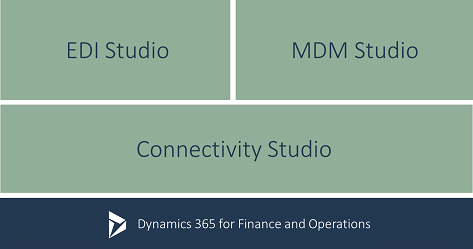Today's digital world needs speed and accuracy to get things done most efficiently. Many organizations that conduct B2B transactions have an Electronic Data Interchange (EDI) solution in place that helps them streamline their important B2B transactions.
Simply put, EDI is a process of exchanging business communications electronically among multiple business stakeholders or partners. An EDI solution reduces the risk of data redundancy and duplication and enables a seamless flow of information across all your departments—thus, improving stakeholder relationships.
EDI supports the exchange of standard business documents such as orders, acknowledgments, advanced shipping notices, and invoices. Usually, companies set up EDI communications with their customers and vendors to minimize risks involving standard processes and save costs.
To-Increase EDI Studio
At To-Increase, we have been helping over 600 customers increase their business efficiency with our Business Integrations Solutions (BIS) for Microsoft Dynamics 365 FO. EDI Studio is an integral part of the standard offering. This versatile system integration software solution helps connect your ERP with other business systems.
Our Business Integrations Solutions (BIS) is a collection of 3 different products: Connectivity Studio, Master Data Management Studio, and EDI Studio. Take a look at the image below to see how the products are structured.

Connectivity Studio is the engine behind EDI Studio. It is a flexible product where you can create integration (or messages) in different formats (XML, EDI formats, text are a few examples) through configuration. Predefined EDI content such as sales order invoices, purchase order confirmations, and extension points can be adapted and extended for specific business needs in an EDI Solution.
Let’s see the main features of our EDI Studio that support supply chain transactions with EDI exchange and integration with business processes to give users a wholesome experience.
The top 5 features of EDI Studio
EDI Studio gives you functionality in D365 to manage all the incoming and outgoing EDI data inside D365FO. The user will have the same user experience as in D365. For example, a sales order form.
Let's talk about the top 5 features of EDI Studio that will help in implementing and using EDI in your business:
1. Validation of incoming data
Data can be coming from different partners/relations through EDI. Of course, agreements are in place about the format that is used and what message types will be sent.
For example, on the sales side, agreements are made to communicate with the customer, inbound sales orders, outbound confirmations, and outbound ASN (advanced shipping notice or packing slips) via EDI in XML format. Invoices, however, will be done via regular mail. Despite these agreements in place, the trading partner can send incorrect data.
For example, if a sales order is received and the requested delivery date is in the past, it could cause problems in processing the order because the correct delivery date is unclear. Or, it could be a non-existing item, which also results in processing problems.
You want to make sure that this incorrect data does not enter the system and that you are able to view and correct it if possible.
For this purpose, EDI Studio provides added D365 forms (and "staging" tables) where the data can be imported into and validated automatically before processing this to the dedicated tables in D365.
The possible validation problems are shown to the user in a familiar D365 form and can be handled in the same way.
For more detailed information about the validation process, please use this link: https://docs.to-increase.com/d365fo/EDI%20studio/1.0/en-us/BpmFlow_5637144962.html
EDI Studio offers these additional forms and a collection of validations that can be used for sales, procurement, and third-party logistics (3PL).
2. D365 process triggers to send data
In the previous section, I explained how you could set up agreements with trading partners to control the types of messages and the formats they are sent in.
Now, let’s learn more about when that message will be sent out to a trading partner, with an example for sales.
A sales order is created in the system. The salesperson will want to send a confirmation to the customer. The standard process is to select “Generate confirmation” in D365. That is what the salesperson does and continues with other tasks.
In the background, EDI Studio will be triggered automatically. It will check agreements for this customer regarding EDI and the message type “confirmation”.
If so, the following process will be started, where the system will generate an XML document that will be sent to the customer.

If there are no agreements in place for this customer, the normal confirmation process will be executed.
So, for the salesperson, there will be no change in the process. EDI Studio will take care of this. These triggers are also present for, for example, outbound purchase orders, processed picklists, 3PL, etc.
3. Full history of EDI communication
Knowing the history of EDI communications is very important. Every EDI communication is captured and accessible by users from D365 forms. So, in case of any questions from trading partners, like "when did you send the invoice?", the answer can be found quickly.
The user can check when each message is processed in EDI, see the original values sent by trading partners, including details of the original file names that were processed.
This history can be used for many different reasons. A few examples:
- In many cases, not only are agreements in place for what message types/formats, but also in response times. So, the user can share details about the orders, where it was sent/received.
- In case a vendor calls stating there was a problem with the inbound order on their side and requests to resend the order, the user can open the history of that order and process it again.
- The customer expected delivery and somehow didn't receive it yet. The user can view the history for the original request values and determine if there was an error in the data.
All history is inside D365, so no navigation to external systems is required to view it. So it is very easy to be found by a user.
4. Broker Connection
When there are many EDI relations that require several formats, using EDI communication with your trading partners via an EDI Service provider (or EDI Broker) is a logical choice.
An EDI Service provider is a company that specializes in EDI formats (and connections) to many different partners.
The basic scenario can be then as follows:
- Message type agreements for the trading partners are handled in EDI Studio.
- The format will be of one type (or golden format) that is agreed with the EDI Broker.
- EDI messages will be communicated via EDI Studio with the EDI Service provider.
- The EDI Service provider communicates directly to the trading partners and translates the data in the correct format for that trading partner.
But different scenarios are also possible, for example, hybrid and non-EDI communication.
EDI Studio gives the flexibility to connect to any third-party EDI service provider. That means if there is a reason to switch between providers, this is supported by EDI Studio.
5. Power of Connectivity Studio
Connectivity Studio is an integration product that allows a business to create integration by configuration. This enables the developers and functional users to create integrations.
But why is this important for EDI Studio?
Well, with Connectivity Studio, you can support the trading partners' requirements flexibly. Connectivity Studio can use any table/field (also custom fields/tables) in D365 and use those in the message that will be communicated to the trading partners. So, the needed data in messages can be set up and maintained quite easily.
Next to the EDI options, you will also be able to create integrations to other systems within the company or export data to Excel, CSV, etc.
Simplify communication with To-Increase EDI Studio
EDI Studio is making it easier to communicate with various internal and external stakeholders of a company, bringing ease and efficiency besides optimizing your supply chain. One of EDI Studio's crucial features is built-in management tools that help track and monitor document processing and message transports. There are staging journals for validating data. And as mentioned above in this blog, EDI Studio uses the power of Connectivity Studio while it can also connect to the third-party EDI service provider for message translation and message delivery, such as TIE Kinetix. Implementing To-Increase EDI Studio would help our customers drive goals and save costs, thus improving ROI.





